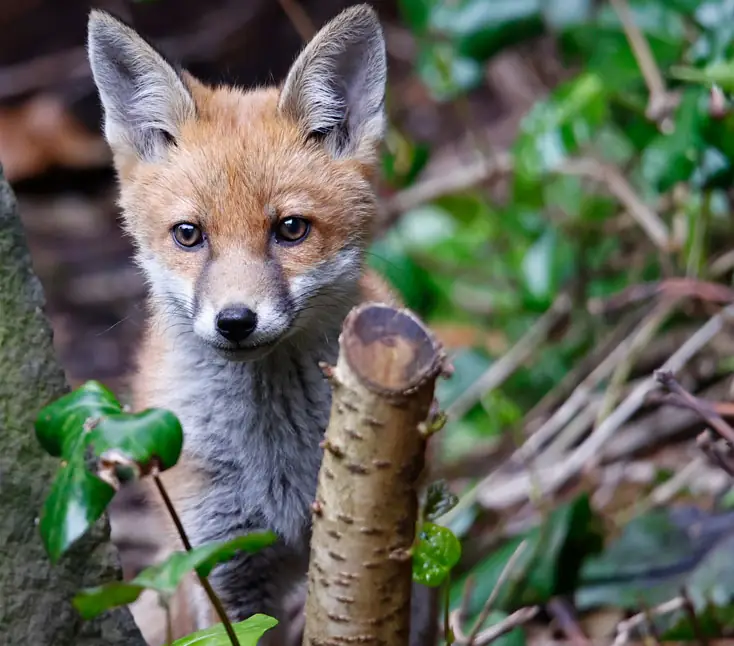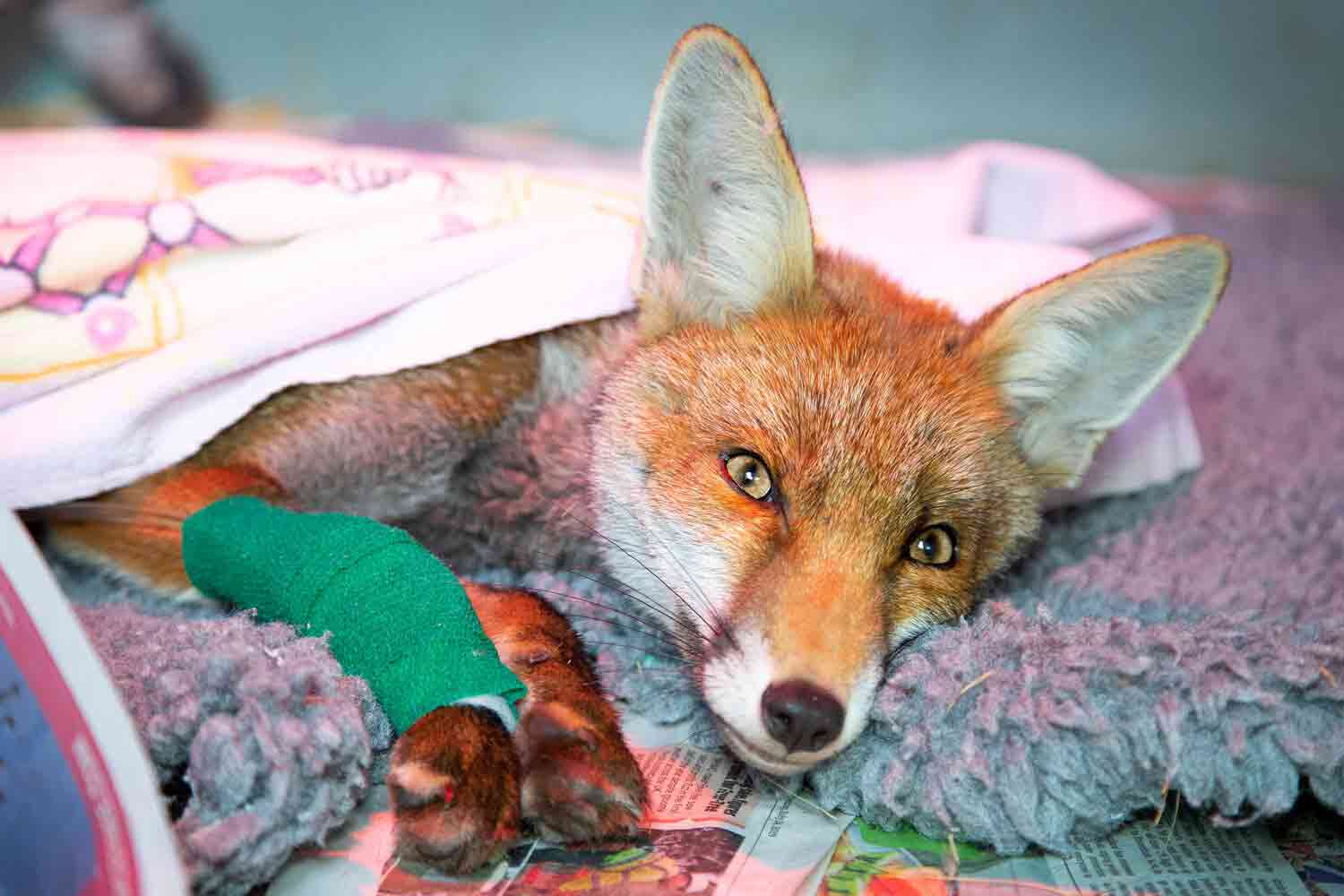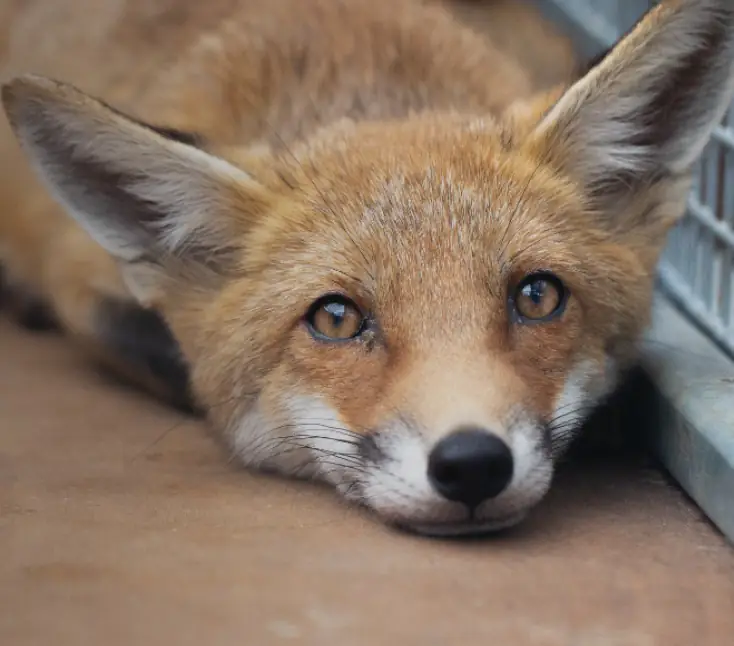Red Fox
Life History
Length: 62-72cm
Tail: 40cm
Weight: 3-10kg
Diet: Omnivorous; their diet ranges from rodents and birds, to fruits and insects.
Average Lifespan: 2-3 years
When to see them: All year round.
Behaviour: Predominantly crepuscular, and historically elusive, however they have adapted to become confident in urban areas, and may be seen out during the day.
UK population: 357,000 (est in 2018)
UK conservation status: Common and widespread

About
One of just a few of the UK’s last remaining apex predators, the red fox is one of England’s most loved but also somewhat controversial mammal species. It’s presence in our towns and cities have made the fox a part of our daily life, and today you’d be hard done by to come across someone that hasn’t had an encounter with a fox, in one way or another.
Their Decline
It is estimated that there are 350,000 foxes living in the UK. Whilst urban populations have grown since the 1990’s, there has been an overall decline in populations by 48% since 1995.
Whilst the reason behind the population decline in rural areas is largely unknown, there are a number of threats to the foxes historical habitat that is likely to be contributors including, over development, reduction in food sources particularly due to farming practices, and also shooting pressures.
Road accidents are a real threat to wild fox populations. It is estimated that 100,000 foxes are killed on UK roads every year, that’s 273 per day, or 11 per hour.
This is not sustainable for wild populations, and we must do more to protect wild foxes. You can help make changes to current policies surrounding infrastructure and increasing considerations for foxes and other wildlife by reporting road traffic accidents of foxes to The Road Lab, a citizen science-based project helping to identify problem areas for wildlife.


How you can help
There are a number of simple ways you can help Foxes.
- Plant fruit trees and shrubs early to provide a food source and avoid using pesticides to encourage invertebrate abundance.
- Vixens can be increasingly sensitive to changes or disturbances after cubs born, so avoid any major garden works where possible, and keep pets away from den sites.
- Slow down on roads, especially around dusk and dawn.
- Remove sheds and decking’s early (November/December) to prevent disturbances after birth.
- Keep a note for a local wildlife rescue in case you find an injured or orphaned fox.
Frequently Asked Fox Questions
There is an injured fox in my garden, but it runs off when I approach it
Unfortunately, like most wild animals, a fox will try to avoid capture no matter the injury it may be suffering with. A limping fox, or a fox walking on just three legs, can still move very quickly. The best way to help the fox is to try and identify the injury; are they holding a leg up, or does it appear to have free movement? Can you see any obvious swelling or open wounds to any of the legs or body? If there are open wounds do they look deep, inflamed or infected?
If a leg looks like it has free movement when the fox moves, or a wound looks deep, inflamed or infected, then this will need intervention and it’s best to call your local wildlife rescue for more advice. If the leg is simply being held up with no signs of swelling or wounds, then they may have simply bruised or sprained the leg, this is very common for an animal that jumps off sheds and down fences. Wounds can also be sometimes just superficial. To help the fox if they have a simple sprain or superficial wound, you can begin a feeding pattern in which providing good, high protein food, will aid in the foxes healing, and prevent him having to travel further whilst the injuries heal.
What is Mange?
Mange is caused by the species-specific parasitic mite Sarcoptes scabiei var. canis. The mite burrows into the foxes skin, and causes intense irritation. As a result the fox will vigourously scratch at the irritated area, often damaging the skin and causing fur loss. For foxes, the most common area mange can start is around the hindquarters, so along the tail, hips and lower back. Although mange itself isn’t fatal, the open sores caused by the itching, are susceptible to infection and sadly, if left untreated, can be fatal.
I think there is a fox with mange in my garden, what should I do?
Mange can sometimes be a secondary ailment to a primary problem, so it is important to identify if there is anything else going on, such as a leg injury, wound or malnutrition. Foxes suffering with an already lowered immune system are most commonly affected by mange.
If the mange is minor, i.e. covering less than 40% of the foxes body, and they have no obvious crusting or infected sores, then a homeopathic supplement can be purchased from our online shop, here. This supplement is given in food and will help with the fox’s overall body condition.
If the mange is advanced, the fox will need to be caught to receive stronger veterinary medication. The best way to catch a fox, is making use of the area it knows. If you’re happy to set up a feeding pattern, and have a safe and secure shed or garage, then the fox can be coaxed into the enclosed space after building up a routine of getting food from in or near the garage or shed. This will allow a rescuer to collect the fox quickly, and without them being left in a small trap for a long period of time.
Can my dog/cat get mange?
All mange mites are species specific, and as foxes are from the canine family, the mite that affects them can also affect dogs, however as long as your dog is having its monthly flea and worming treatment, as recommended by vets, then they will be protected against mange, depending on the medication used. Cats can also catch mange but they are affected by Notoedres cati mite, and so is species specific to cats.
I don't want foxes in my garden. How can I keep them away?
As a hospital, we only treat sick and injured wildlife. Whilst we always advocate for humans to try and live side by side with our wild neighbours, we understand that sometimes there may be occasions where foxes need to be deterred.
Under section 9 of the Animal Welfare Act 2006, it is an offence to leave an animal in an area it does not know, and thus may be incapable of fending for itself and living independently. If the animal actually suffers as a result of its abandonment i.e. unable to find food, shelter or comes into conflict, there may also be an offence committed under section 4 of the Animal Welfare Act 2006 due to unnecessary suffering caused. For this reason, relocation of a wild animal is not an option, and is seldom successful in deterring foxes in the future, the removal of a fox from a territory simply opens that territory up for another fox to claim it.
Fox repellents and deterrence methods are the best option for keeping foxes away. The trick is to make them feel unwelcome in your garden, humanely. Often, this can be as simple as using scented deterrents such as Citronella sprays, or Scoot, or high pitched sound frequencies that foxes dislike.
Other options include hiring professional humane deterrence companies such as Fox-a-gon or Foxolutions.
Help, there are two foxes in my garden stuck together!
Every year, around January to March, we are inundated with calls from members of the public that have seen two foxes “stuck together”. This behaviour can look and sound distressing, but please be assured that this “tie” is a natural part of the fox mating season. The tie can last anywhere between 20mins to several hours, and to prevent them injuring themselves or a rescuer getting injured, they are best left well alone, allowing nature to run its course.
I think I've found an orphaned fox cub!
Fox cubs can often be mistaken for kittens or puppies, understandably. But the tell-tale sign, literally, is the tail!
Fox cubs are dark brown in colour, and have a characteristic white tip at the end of their tail. Double check you have found a cub and not a kitten or puppy.
If the cub doesn’t appear to be injured, is routinely calling and warm to the touch, monitor the cub for a short while from a distance, the parent may have dropped the cub whilst moving it, and may still be close by.
Due to the number of factors that need to be considered when finding a fox cub, the best port of call is to give us a call so we can triage the situation appropriately. Our emergency helpline is 01372 360404
.
I hear foxes screaming at night, are they in pain?
The red fox has a varied vocal repertoire, but the most common can often be mistaken for a fox in distress or pain. Wild animals in general won’t often make sounds when in pain or distress, as this can attract unwanted attention and show weakness.
Red foxes make a variety of different sounds including barks, screams, howls, squeals and ‘gekkering’.
Vocalisations are heightened around the mating season as adults use barking sounds to attract a mate.
